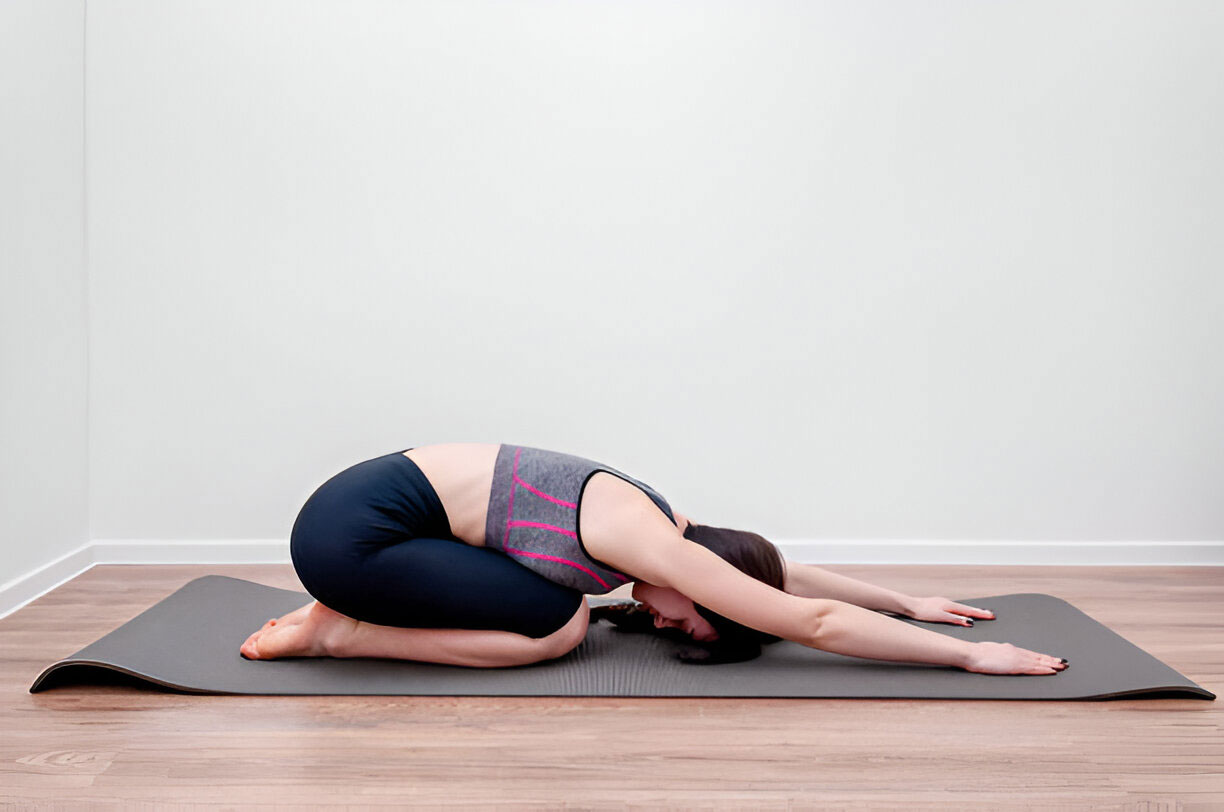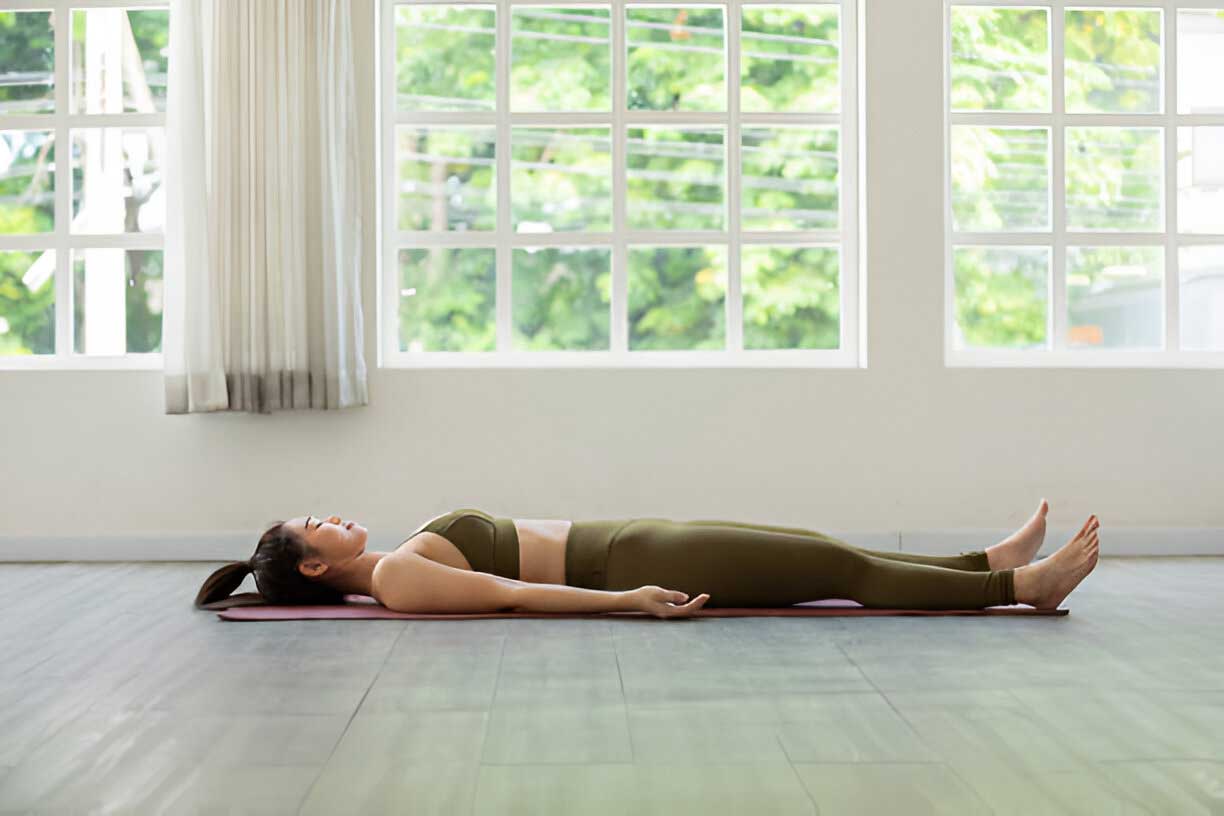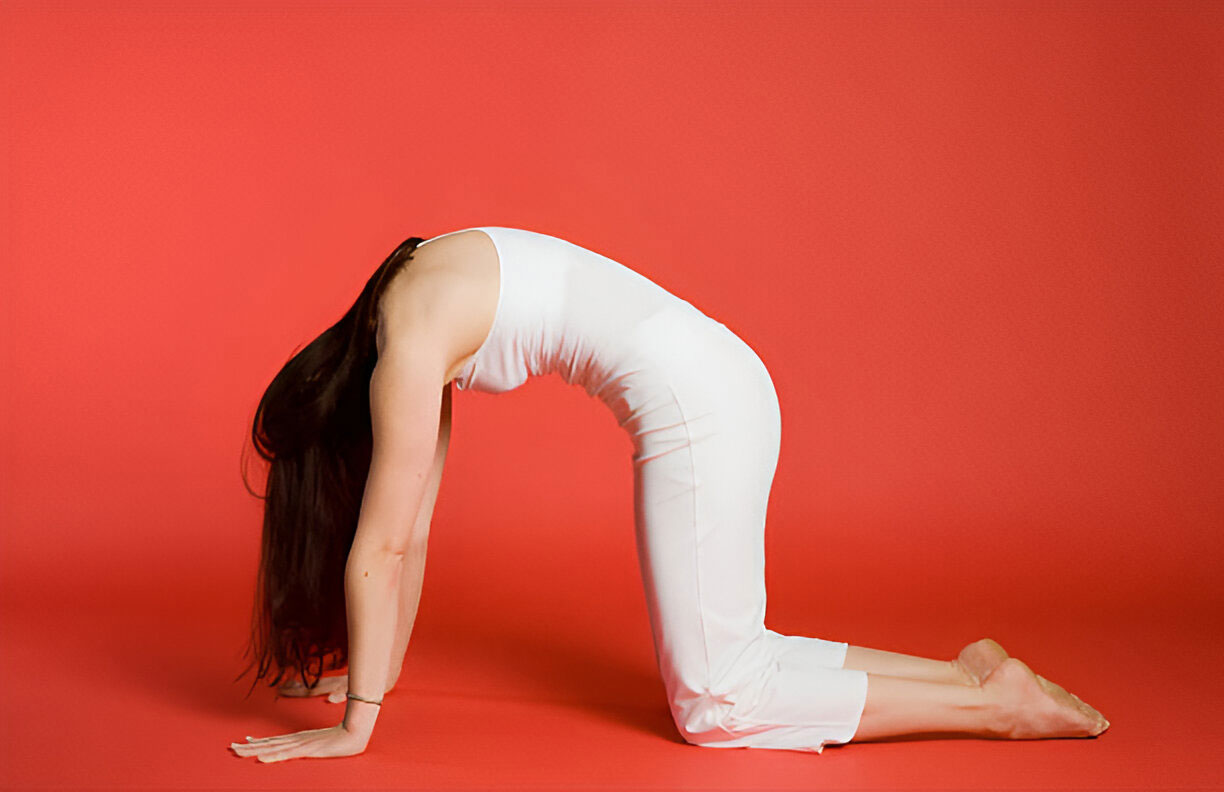How Yoga for Better Sleep Can Transform Your Nighttime Routine
Introduction
Struggling with poor sleep quality? You’re not alone. Many people find it difficult to fall or stay asleep, leading to various health problems like stress, anxiety, and decreased productivity. Fortunately, yoga can offer a natural solution. Yoga for better sleep is more than just physical exercise – it’s a holistic practice that calms the mind and body, creating an environment conducive to restful sleep.
The Connection Between Yoga and Sleep
Yoga and sleep share a deep connection. The practice of yoga encourages relaxation and reduces stress, both of which are essential for good sleep. Stress and anxiety are common causes of insomnia and other sleep disorders. By addressing these issues, yoga helps create a peaceful state that allows sleep to occur naturally and effortlessly.
Yoga also promotes mindfulness, the practice of being fully present in the moment. This mindfulness extends to your sleep habits, helping you become more aware of your body’s needs and rhythms. As a result, you’ll find it easier to establish and maintain a healthy sleep routine.
How Yoga Improves Sleep Quality
Yoga for better sleep works on several levels, targeting both the mind and body to create a state of balance and relaxation. Here are some ways yoga can improve your sleep quality:
- Reduces Stress and Anxiety: Yoga lowers cortisol levels, the stress hormone. Reduced cortisol leads to a calmer mind, making it easier to fall asleep.
- Balances the Nervous System: Yoga activates the parasympathetic nervous system, responsible for the body’s rest-and-digest response, helping the body shift into a relaxed state.
- Promotes Relaxation: Through breathing exercises and gentle stretches, yoga releases muscle tension and promotes relaxation.
- Improves Breathing: Pranayama, or yogic breathing, regulates breath, calms the mind, and reduces restlessness, leading to deeper sleep.
- Regulates Sleep Patterns: Regular yoga practice helps regulate your circadian rhythm, leading to consistent, restful sleep.
Best Yoga Poses for Better Sleep
Incorporating specific yoga poses into your routine can enhance your sleep quality. These poses calm the nervous system, relax the body, and prepare you for a peaceful night’s sleep.

1. Balasana (Child’s Pose)
Child’s Pose is a resting pose that calms the mind and relieves body tension. It stretches the hips, thighs, and ankles, promoting relaxation.
- How to do it: Kneel on the floor, sit back on your heels, and extend your arms forward. Rest your forehead on the mat, and breathe deeply.
2. Viparita Karani (Legs-Up-The-Wall Pose)
This pose calms the nervous system, reduces stress, and improves circulation, making it ideal for relaxation.
- How to do it: Lie on your back with your legs extended up against the wall. Keep your arms relaxed by your sides, and focus on your breathing.
3. Supta Baddha Konasana (Reclining Bound Angle Pose)
This pose opens the hips and chest, promoting deep relaxation and improving circulation.
- How to do it: Lie on your back, bend your knees, and bring the soles of your feet together. Let your knees drop to the sides, and rest your arms by your sides.
4. Savasana (Corpse Pose)
Savasana is the ultimate relaxation pose, helping the body and mind fully relax, making it ideal for preparing for sleep.
- How to do it: Lie flat on your back with your arms and legs extended. Close your eyes and focus on your breath, allowing your body to relax completely.
5. Marjaryasana-Bitilasana (Cat-Cow Pose)
This gentle flow between two poses relieves spine tension and calms the mind, preparing the body for sleep.
- How to do it: Start on your hands and knees. Inhale as you arch your back (Cow Pose), and exhale as you round your back (Cat Pose). Repeat this flow several times.
Breathing Techniques for Better Sleep
Breathing exercises, or pranayama, are essential in yoga for better sleep. These techniques calm the mind and prepare the body for rest.
1. Nadi Shodhana (Alternate Nostril Breathing)
This breathing technique balances the mind and calms the nervous system, making it easier to fall asleep.
- How to do it: Sit comfortably and close your right nostril with your thumb. Inhale through your left nostril, then close it with your ring finger. Release your thumb and exhale through your right nostril. Repeat on the other side.
2. Ujjayi Pranayama (Ocean Breath)
Ujjayi Pranayama involves deep, controlled breathing that soothes the nervous system and prepares the body for sleep.
- How to do it: Inhale deeply through your nose, and exhale slowly, constricting the back of your throat to create a gentle “ocean” sound. Focus on the sound and sensation of your breath.
3. 4-7-8 Breathing
This simple technique helps relax the body and mind, making it easier to drift off to sleep.
- How to do it: Inhale through your nose for 4 seconds, hold your breath for 7 seconds, and exhale through your mouth for 8 seconds. Repeat several times.
Creating a Bedtime Yoga Routine
To maximize the benefits of yoga for better sleep, consistency is key. Creating a bedtime yoga routine can help signal to your body that it’s time to wind down. Here’s a simple routine to get started:
- Set the Mood: Create a calming environment. Dim the lights, play soft music, and use essential oils like lavender to promote relaxation.
- Start with Gentle Poses: Begin with gentle poses like Child’s Pose or Legs-Up-The-Wall Pose to ease into relaxation.
- Incorporate Breathing Exercises: Practice breathing exercises like Nadi Shodhana or 4-7-8 Breathing to calm the mind.
- End with Savasana: Finish your routine with Savasana, allowing your body and mind to fully relax.
- Practice Mindfulness: Focus on the present moment throughout your routine, letting go of any thoughts or worries.
Tips for Enhancing Your Yoga Practice for Better Sleep
To make the most of your yoga practice, consider these additional tips:
- Practice Regularly: Consistency is key. Try to practice yoga for better sleep at the same time each evening.
- Listen to Your Body: Pay attention to how your body feels during your practice. Avoid pushing yourself too hard, as this can create tension.
- Use Props: If needed, use props like blankets, bolsters, or blocks to support your poses and enhance relaxation.
- Combine Yoga with Other Relaxation Techniques: Consider combining yoga with other relaxation techniques, such as meditation or aromatherapy, to enhance its effects.
- Stay Hydrated: Drink water throughout the day to stay hydrated, but avoid drinking too much before bed.
The Science Behind Yoga and Sleep
The effectiveness of yoga for better sleep is supported by science. Several studies have shown that yoga can improve sleep quality and reduce the symptoms of insomnia.
One study found that participants who practiced yoga for eight weeks experienced significant improvements in sleep quality and duration. Another study showed that yoga could reduce the time it takes to fall asleep and improve overall sleep efficiency.
Yoga’s ability to reduce stress and anxiety is one of the main reasons it is effective for sleep. By lowering cortisol levels and promoting relaxation, yoga helps create an environment conducive to sleep.
The Role of Mindfulness in Sleep
Mindfulness plays a crucial role in yoga for better sleep. Mindfulness is the practice of being fully present in the moment, which can help reduce stress and anxiety. When you’re mindful, you’re less likely to get caught up in worries or negative thoughts that can interfere with sleep.
Yoga encourages mindfulness by focusing on the breath and the sensations in the body. This focus helps quiet the mind, making it easier to fall asleep.
Practicing mindfulness throughout the day can also improve sleep. By staying present and aware of your thoughts and emotions, you can reduce stress and create a more peaceful state of mind.
Yoga Nidra: The Ultimate Sleep Practice
Yoga Nidra, also known as “yogic sleep,” is a powerful practice for achieving deep relaxation and better sleep. It involves guided meditation that takes you through the different layers of consciousness, leading to a state of profound rest.
Yoga Nidra is often practiced lying down, making it an ideal practice to do before bed. The practice typically begins with a body scan, followed by breath awareness and visualization. The goal is to reach a state of deep relaxation while remaining awake and aware.
Studies have shown that Yoga Nidra can significantly improve sleep quality and reduce symptoms of insomnia. It has also been found to reduce stress and anxiety, making it an effective tool for better sleep.
The Benefits of Yoga for Better Sleep
The benefits of yoga for better sleep go beyond just getting a good night’s rest. Here are some of the additional benefits you can experience:
- Improved Mental Health: Regular yoga practice can reduce symptoms of depression and anxiety, leading to better overall mental health.
- Enhanced Physical Health: Yoga improves flexibility, strength, and balance, contributing to better physical health.
- Increased Energy Levels: Getting better sleep leads to increased energy levels during the day, making it easier to stay active and productive.
- Better Focus and Concentration: Quality sleep improves cognitive function, leading to better focus and concentration.
- Stronger Immune System: Adequate sleep is essential for a healthy immune system. Yoga helps you achieve the rest you need to stay healthy.
Addressing Common Challenges in Yoga for Better Sleep
Even though yoga for better sleep is beneficial, some people may face challenges when incorporating it into their routines. Here are some common obstacles and how to overcome them:
1. Lack of Time
Many people feel they don’t have enough time for yoga. However, even a short, 10-minute practice can be effective.
- Solution: Start with just a few minutes of gentle stretches and breathing exercises. Gradually increase the duration as it becomes a habit.
2. Difficulty Relaxing
Some individuals may find it hard to relax during yoga, especially if they’re new to the practice.
- Solution: Focus on your breath and try guided yoga sessions. Using a soothing voice or calming music can help ease the transition into relaxation.
3. Inconsistent Practice
Consistency is key to reaping the benefits of yoga for better sleep. Skipping sessions can make it harder to see progress.
- Solution: Set a specific time each day for your practice. Treat it as a non-negotiable part of your bedtime routine.
4. Physical Limitations
Certain yoga poses might be challenging for individuals with physical limitations or injuries.
- Solution: Modify poses as needed or use props. Always listen to your body and avoid pushing yourself into discomfort.
Integrating Yoga with a Holistic Sleep Strategy
Yoga is a powerful tool, but it’s even more effective when combined with other healthy sleep practices. Here’s how to create a holistic approach to improving sleep:
- Maintain a Consistent Sleep Schedule: Go to bed and wake up at the same time every day. Consistency helps regulate your circadian rhythm.
- Create a Sleep-Inducing Environment: Keep your bedroom cool, dark, and quiet. Consider using blackout curtains, white noise machines, or earplugs.
- Limit Screen Time Before Bed: The blue light emitted by screens can interfere with melatonin production, making it harder to fall asleep.
- Watch Your Diet: Avoid heavy meals, caffeine, and alcohol close to bedtime. Opt for light snacks if you’re hungry.
- Incorporate Relaxation Techniques: Besides yoga, consider practices like meditation, deep breathing, or reading a calming book to unwind.
Real-Life Success Stories
Hearing about others’ experiences can be motivating. Here are a few stories from individuals who have successfully used yoga for better sleep:
- Sarah’s Journey: Sarah struggled with insomnia for years. After incorporating a simple 15-minute yoga routine into her nightly ritual, she noticed a significant improvement in her sleep quality. She now sleeps soundly most nights.
- James’ Experience: As a busy professional, James found it hard to relax before bed. He started practicing Yoga Nidra and found that it helped him unwind and sleep more deeply. He now considers it an essential part of his bedtime routine.
- Emma’s Transformation: Emma was dealing with stress-related sleep issues. She began practicing yoga and mindfulness together and noticed a dramatic reduction in her anxiety levels. This shift helped her achieve more restful sleep.
Final Thoughts: Embrace Yoga for Better Sleep
Yoga for better sleep isn’t just about stretching or physical exercise; it’s a holistic approach to well-being. By incorporating yoga into your routine, you can reduce stress, promote relaxation, and create a peaceful state of mind conducive to sleep.
Remember, consistency is key. Practice yoga regularly, listen to your body, and create a bedtime routine that works for you. With time and dedication, you’ll experience the transformative effects of yoga for better sleep.
With regular practice, you’ll notice how yoga for better sleep can become an essential part of your nightly routine, leading to improvements not only in your sleep quality but in your overall well-being.
Long-Term Benefits of Yoga for Better Sleep
Incorporating yoga into your life can have long-lasting effects. Here are some ways yoga can benefit you in the long run:
- Reduced Stress Levels: As you continue practicing yoga, you’ll become better at managing stress. Lower stress levels contribute to better sleep, making it easier to unwind at the end of the day.
- Improved Physical Health: Over time, yoga enhances your flexibility, strength, and overall physical health. A healthy body is more likely to enjoy restful sleep, free from aches and pains.
- Better Mental Clarity: Consistent yoga practice helps clear the mind, reducing mental clutter and promoting a calm, focused state. This clarity makes it easier to let go of worries before bed, facilitating better sleep.
- Enhanced Emotional Well-Being: Yoga encourages emotional balance, helping you process emotions in a healthy way. This emotional stability contributes to a peaceful mind, ready for restful sleep.
- Stronger Immune System: Adequate sleep is essential for a robust immune system. By improving your sleep through yoga, you can enhance your body’s ability to fight off illness.
- Increased Self-Awareness: Yoga fosters a deep sense of self-awareness, helping you tune into your body’s needs. This awareness allows you to identify and address sleep-related issues more effectively.
Making Yoga a Lifelong Practice
To fully reap the benefits of yoga for better sleep, consider making it a lifelong practice. Here are some tips to help you stay committed:
- Set Realistic Goals: Start with manageable goals, such as practicing yoga three times a week. As you progress, you can increase the frequency and duration of your practice.
- Create a Support System: Surround yourself with others who share your interest in yoga. Joining a yoga class or online community can provide motivation and support.
- Keep It Fun: Explore different styles of yoga to keep your practice enjoyable. Variety can prevent boredom and keep you engaged.
- Celebrate Progress: Acknowledge your achievements, no matter how small. Celebrating progress can keep you motivated and committed to your practice.
- Integrate Yoga into Daily Life: Incorporate yoga principles into your daily routine. Simple practices like mindful breathing or gentle stretching can be done throughout the day, reinforcing the benefits of your practice.
The Future of Your Sleep Journey
As you continue your journey with yoga for better sleep, you’ll discover that the practice offers more than just physical benefits. Yoga can transform your entire approach to sleep, helping you cultivate a deeper sense of peace, relaxation, and well-being.
The more you practice, the more you’ll experience the cumulative effects of yoga. Over time, you’ll find that you’re not just sleeping better, but living better. Your mind will be calmer, your body more relaxed, and your spirit more at ease.
Remember, the journey to better sleep is a personal one. Take your time, listen to your body, and allow yourself to explore what works best for you. Whether you’re a seasoned yogi or just starting, yoga for better sleep can be a powerful tool in your quest for a healthier, more restful life.
In conclusion, yoga for better sleep is a simple yet effective way to enhance your sleep quality and overall health. By committing to a regular practice and integrating yoga into your nightly routine, you can experience profound improvements in your sleep and well-being. Embrace the practice, and let yoga guide you to the restful nights and energized days you deserve.





